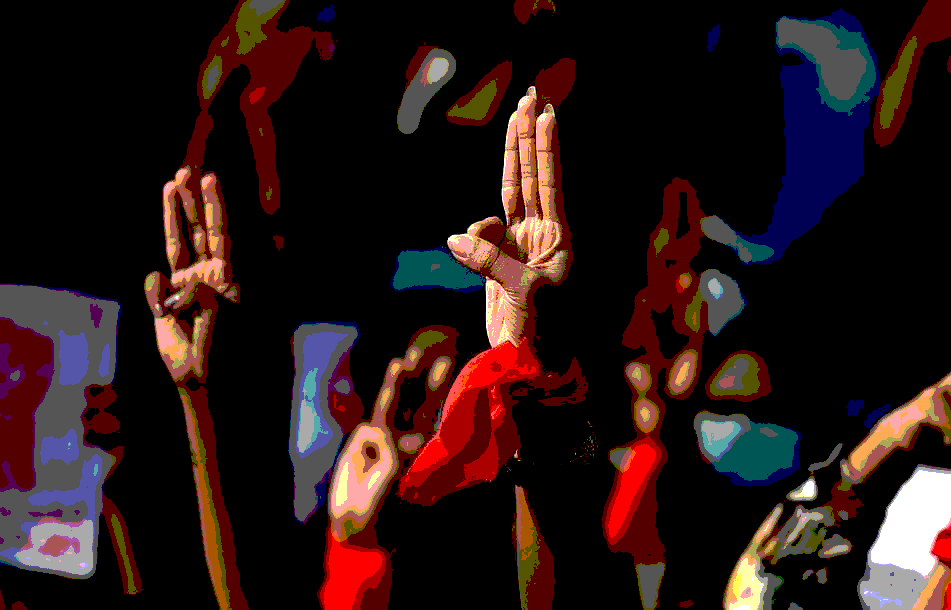Myanmar Spring Chronicle – November 11 Overview
(MoeMaKa, November 12, 2025)
Looking Back on the Spring Revolution
While scrolling through Facebook recently, I came across an analysis from a political commentator stating that “the first wave of the Spring Revolution has ended.”
The term Spring Revolution is not an officially defined label set by any party or organization. Rather, it is a collective expression used and understood by those who oppose the military dictatorship — people who reject tyranny and believe in democracy and justice. It represents a shared idea, not an institutional definition.
Now that the revolution has entered its fifth year, I found myself reflecting on the commentator’s claim. Even if we don’t know precisely what signs led to his conclusion, it feels worthwhile to look back at the past five years — and to consider what the near future may hold.
The Five-Year Journey So Far
Over these years, new entities have emerged — armed groups, the National Unity Government (NUG), and the People’s Defense Forces (PDFs). Alongside the NUG, several interim or regional administrative bodies were formed in various states and regions:
-
Karenni (Kayah) State: Interim Executive Council
-
Chin State: Chinland Council
-
Mon State: Mon Federal Council
-
Pa-O Region: Pa-O National Federal Council
-
Ta’ang (Palaung) Region: Ta’ang Political Consultative Council
Among these, Karenni, Chin, and Ta’ang areas established functioning interim governments, while Mon and Pa-O regions remain only partially organized.
The relationships and coordination between these regional councils and the NUG remain loosely defined — not uniform, not centralized, and not always clearly structured.
Meanwhile, in other states, long-established ethnic armed organizations (EAOs) continue to govern territories they have controlled since before the coup. The KNU/KNLA administers areas across eastern Karen State, parts of Bago Region, Tanintharyi, and Mon; the KIO/KIA continues governing zones in Kachin State and northern Shan; and in Rakhine State, the Arakan Army (AA) and its political wing, the United League of Arakan (ULA), run their own administration.
These governance models are not standardized or hierarchical, but most can still be considered allied with the NUG in their opposition to the junta.
Fragmented Command, Shared Purpose
Across the Bamar-majority central regions — Mandalay, Sagaing, Magway, Naypyitaw, western Bago, Ayeyarwady, and Yangon — there are now hundreds of PDF and local defense groups. Some fall directly under the NUG’s Ministry of Defense, while others operate independently.
According to various sources, over 300 battalions are formally under NUG command. But beyond those are numerous autonomous local forces with their own names and structures.
The question of how to unite these dispersed armed groups has lingered for almost four years — without a clear answer. Should unity be based on political ideology, on shared access to funding and weapons, or through hierarchical consolidation by the strongest forces? Or will cooperation remain limited to ad-hoc battlefield coordination? None of these questions have yet been resolved.
The Rise and Stall of Military Momentum
The first phase of Operation 1027, launched in October 2023 by the Northern Brotherhood Alliance, brought major victories — dozens of towns captured, regional commands overrun, and even the capture of senior junta officers. The second phase, beginning mid-2024, extended those gains, including the seizure of several key military headquarters.
During this same period, PDF forces under the NUG also seized control of towns and territories across Karen, Kachin, northern Shan, Rakhine, Chin, Sagaing, and Magway Regions. It was arguably the peak of revolutionary military success.
But by early 2025, after months of advances, some ethnic armed groups began signing ceasefires, and some revolutionary-held areas were lost. Since then, through mid and late 2025, the momentum has shifted, and the military balance continues to change as the year ends.
For this reason, the view that “the first wave of the Spring Revolution has ended” may stem from the decline in military momentum that began in mid-2024.
The Coming of a Second Wave
If the first wave has indeed ended, the natural question follows: when and how will the second wave begin?
Will political unity among revolutionary forces lead to military unity?
Can cooperation deepen once conflicts of interest and internal rivalries are resolved?
How will these groups manage China’s influence and pressure as a key external factor?
A new phase can only begin once these obstacles are addressed and overcome.
At the same time, difficult questions remain unresolved:
-
How will disputes over territorial control among ethnic forces be handled?
-
How can ethnic nationalism and competition be balanced within the broader federal vision?
-
What shared political principles can prevent ethnic clashes or power struggles?
After more than eight decades of civil war, the revolution’s foundational question — how to build a Federal Democratic Union — still awaits a common starting point.
The Crossroads Ahead
The challenge is clear: if the revolution cannot begin addressing both its short-term crises and long-term structural problems, it risks repeating Myanmar’s historical cycle — solving one conflict only to breed another.
The Spring Revolution must therefore start moving along the path toward a federal democratic solution, balancing immediate survival with the deeper political transformation it was meant to achieve.
If not, temporary fixes will only give birth to new, longer-lasting conflicts — and the next wave of the revolution may once again have to fight the same battles under different names.

